
Media outlets often tout the holiday season is a period of weight gain for many. With the average weight gain during the holidays thought to be a bit less newsworthy at about 1 pound from mid-November to mid-January,1 eating habits maintained into the new year will surely make an impact on how you feel. Whether you’re aiming to maintain your weight, lose weight or simply feel your best in the midst of busy schedules, here are 4 hacks from our team to get you started.
Managing Your Weight Hack #1- Color Up!
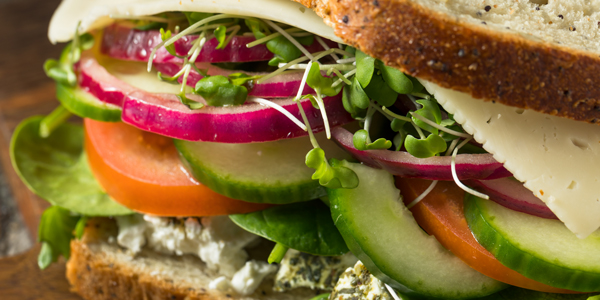
Add more color to meals and snacks with fruits and vegetables in all forms {dried, canned, 100% juice, frozen and fresh}. Fruits and vegetables are bright and vibrant in color for good reason— they’re inviting you to eat them! 😊 Make hitting all colors of the rainbow (while being sure you’re eating at least one leafy green each day) your daily goal for the next few weeks…and take note of how you feel.
Why fruits and vegetables?
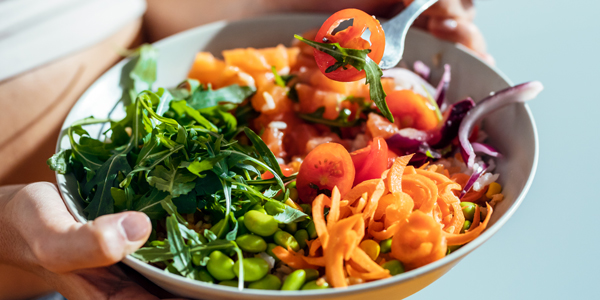
- Meeting the minimum daily servings of fruits (~1 ½-2 cups)2 and vegetables (~2 ½-4 cups)3 for an adult each day will give your body essential nutrients. Many of these nutrients assist important cellular functions imperative for health. For example, folate is a B-vitamin (B-9) found in dark green leafy vegetables and oranges required to make DNA (Deoxyribonucleic acid) and RNA (Ribonucleic acid). Thereby, folate is needed in order for cells to divide appropriately.4
- Water is one of the essential nutrients rich in fruits and vegetables. This means eating your colors at each meal and snack will help take up volume in your stomach and thereby displacing other higher-calorie foods like added sugar-rich pastries, yogurts, drinks and desserts, salty snacks and solid fat-rich fried foods, pastries and drinks.
- Fruits and vegetables offer fiber. The combination of water and fiber found in fruits and vegetables helps to create a sense of a satiety (or fullness).5,6 Eating more fruits and vegetables each day than you normally do will help to reduce the number of calories you eat while gaining additional benefits from fiber like better blood sugar control and a more regular transit time for food to travel through your gut to your bowel.7
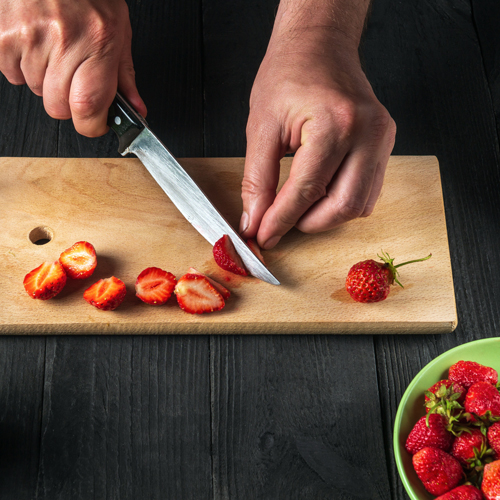
How to Color Up
✓ Add vegetables to your morning meal. Add a side of baby carrots or snackable-size of tomatoes to crunch on. Add leafy greens to egg scrambles.
✓ Snack on fruit when sweet cravings kick in. Whether it’s mid-morning or mid-afternoon, give your brain the quick source of energy it craves: sugar. Feed the craving without added sugars by enjoying fruit with naturally-occurring sugar. Whether you reach for an apple, bunch of grapes or 3 to 5 dried figs, be intentional in meeting your brain’s needs and pack them with you on the go!
✓ Start lunch with veggie-packed, broth-based soup. A tasty way to warm up while meeting vegetable goals is beginning meals with a bowl of soup.
✓ Crunch on salad before dinner. Whether it’s while prepping your meal or the first thing you dig into at the dinner table, make a dark leafy green salad your start. Dress it up with all the colors you’re still aiming for by the end of your day and you’ll curb a ravenous appetite that would otherwise direct you to fill up on carbohydrate-rich sides such as bread and pasta.
Managing Your Weight Hack #2- Drink Water

Improper hydration can be a buzz kill for energy—the last thing you need. Additionally, thirst can often be mistaken for hunger, leading you to eat more calories than your body is actually asking for (or needing).8
Why Water?
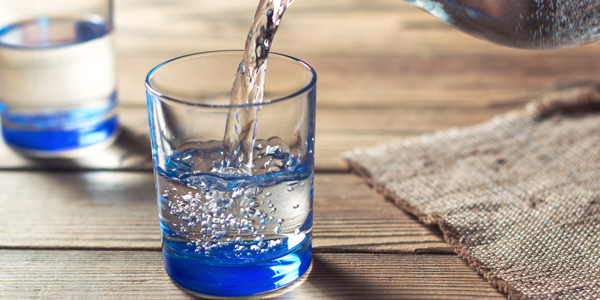
- Your body is made up of about 60% water, with minimal changes as you age from early childhood.9 Give your body its primary nutrient for survival and you’ll be thanked in the form of a clear mind, soft & subtle skin and better temperature regulation.
- Water removes waste. The ultimate detox tool, water is the medium in which nutrients and waste travel through your body (think: blood). Staying hydrated helps your body remove cellular waste more efficiently.10
- Water fills your belly. By taking up volume in your stomach, water in foods, and all by itself in the form of a beverage, will help create that sense of satiety you’re aiming for to deter ravenous hunger.11
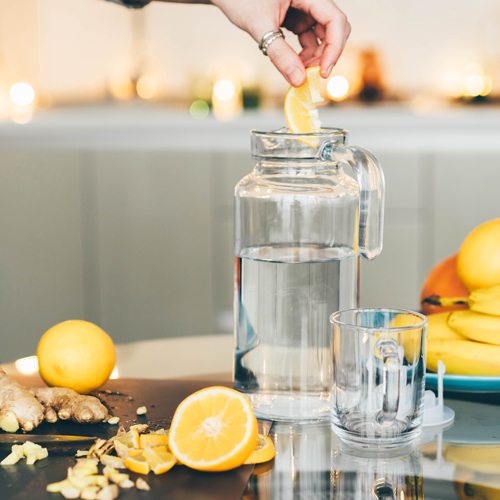
How to Get Enough Water
✓ Keep a reusable water bottle with you. Fill up before you leave the house and sip along during your travels. At work, keep it full and set a timer to drink every 15 to 30 minutes.
✓ Drink a glass of water at wake up. Keep 8 to 12 ounces of water on your nightstand so the very first thing you do upon sitting up is to drink a glass of water. This will help begin the process of quenching your body’s hydration needs from rebuilding tissues like skin, muscles and bones all night long during your slumber.
✓ It’s not just water. Foods like fruits and vegetables, soups and salads, as well as beverages such as tea, coffee, 100% juice and milk, will help you stay hydrated…so count them as ways of meeting your hydration needs.
Managing Your Weight Hack #3- Pair with Protein
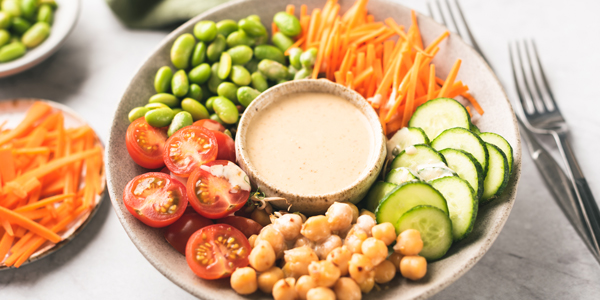
Although many Americans meet their minimum recommended protein intake just fine, there are groups that may not—such as adolescent and older females.12 That said, many people tend to eat an imbalance of protein throughout the day, with the majority coming from dinner.12 This is not ideal for meeting current daily protein intake recommendations from researchers {>1.6 grams per kilogram body weight each day}, nor helpful for feeling your best, especially while managing appetite13 and/or building muscle mass when strength training.14
Aim to eat a minimum of 30 to 40 grams protein at every meal (yes, including breakfast!) so you’re able get the most out of your daily protein intake.14
Why protein?

- Like fiber, protein-rich foods help create a sense of satiety. During digestion, protein helps slow down the process simply by being there. It takes your stomach and small intestine longer to break protein down into the basic components of amino acids.15
- Carbohydrate-rich foods, like fruits, vegetables, grains and milk, break down slower over time thanks to protein’s presence. The end result is better sustained blood sugar as carbohydrates are released over the course of digestion, versus all at once, like they are when a carbohydrate-rich food is eaten all by its lonesome.16 When it comes to protein, remember the sentiment “We’re better together!”
- Protein delivers fewer calories per gram than fat. Not only will protein help create a sense of satiety, it will do it for fewer calories than fat (5 fewer calories for every gram), making it a great nutrition deal bite-per-bite.
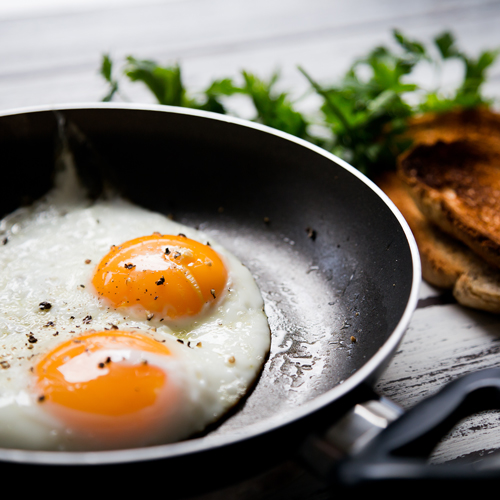
How to Eat Enough Protein
✓ Include protein-rich milk at breakfast (e.g.: cow’s milk or soy milk). Most plant-based “milks” do not offer equivalent amounts of protein, unless additional protein is added to their ingredients.
✓ Mix up sources of protein. Protein is available in all kinds of plant-based foods, not just animal sources like eggs, dairy, beef, pork, chicken, fish and shellfish. From nuts and seeds, nut and seed butter, soy-based meat alternatives, edamame, tofu and tempeh to dried beans, peas, lentils and chickpeas, your options are plentiful.
✓ Enjoy a variety of plant-based options each day. Sprinkle walnuts into your morning oatmeal, snack on a whole grain peanut butter sandwich, add dried beans, peas, lentils and chickpeas to soups and salads and create dinner side dishes with whole grains such as brown rice and quinoa as the base.
Managing Your Weight Hack #4- Move Your Body

The nutritiousness of the foods you eat are only a piece of the puzzle, when it comes to weight loss. A body in motion needs fuel. The more it moves, the more fuel it uses. For your body, fuel comes in the form of calories. Combine the hacks above for eating fewer calories with more exercise, and you’ll have a winning ticket to managing weight—well after gyms are flooded with New Year’s Resolution makers.
Why exercise?

- Build the fire. By moving your body with exercise, you will help your metabolism come online and stay there a bit longer. This means not only will you burn calories to complete the activity you choose; your body will continue burning calories for a small portion of time once you’re finished.17
- Feel great. Although working on cardio endurance may not feel awesome at first, over time, your breathing will level up. When that does, get ready for additional mental health impacts. Often called a “runner’s high,” the happy, jolly, empowered feeling you get after a workout may be thanks to compounds called endocannabinoids, not endorphins as previously thought, which are released by your body while working out.18
- Get stronger. Building muscle strength does more than help reshape the way your body looks. Resistance-training exercises (e.g.: lifting weights, doing push ups, etc.) also improves your muscle strength and thereby your ability to lift and move heavier items.19 This could lead to being able to successfully complete more functional tasks such as lifting heavy trash bags into your garbage can, pulling down heavy boxes from shelves and picking up your elder dog when he needs help up the stairs.
- Muscle burns more calories than fat. The composition of your body matters. The more lean muscle mass you carry on your frame, the more calories you will burn at rest, let alone during bouts of activity.20 Get more out of weight loss goals by creating a body that works better for you every minute of the day.

How to Get Enough Exercise
✓ Once you receive the green light to begin an exercise routine from your healthcare provider, start small. Begin with 10-minute bouts of exercise spread throughout the day. For example, wake up a few minutes earlier than normal and take your pooch for a neighborhood stroll. Take walks during work breaks. Have a dance party will preparing dinner. Whatever speaks to you, do it on the daily.
✓ Join a gym. Dark skies have you feeling down leading away from the winter solstice in December? Make a date with yourself for gym time immediately after work. There are plenty of options available to meet your needs—from gyms that are completely open for you to go at your own pace to those with certified personal trainers to help develop a plan tailored directly to your goals and abilities.
✓ Stream fitness classes. Workout any time of day in the comfort of your own home by tapping into free and fee-based online classes. From yoga and aerobics to traditional strength training and HITT classes, there’s a world of variety right at your fingertips.
1 Yanovski, J.A et al. A prospective study of holiday weight gain. N. Engl. J. Med. 2000; 342:861–867. https://www.nejm.org/doi/full/10.1056/nejm200003233421206.
2 United States Department of Agriculture (USDA). Fruit. Accessed 10/27/2023. https://www.myplate.gov/eat-healthy/fruits.
3 United States Department of Agriculture (USDA). Vegetables. Accessed 10/30/2023. https://www.myplate.gov/eat-healthy/vegetables.
4 National Institutes of Health (NIH) Office of Dietary Supplements (ODS). Fact sheet for health professionals on folate. Accessed on 10/31/2023. https://ods.od.nih.gov/factsheets/Folate-HealthProfessional/.
5 Rolls BJ, Bell EA, Thorwart ML. Water incorporated into a food but not served with a food decreases energy intake in lean women. Am J Clin Nutr. 1999 Oct;70(4):448-55. https://doi.org/10.1093/ajcn/70.4.448.
6 Burton-Freeman, Britt et al. Ratios of soluble and insoluble dietary fibers on satiety and energy Intake in overweight pre- and postmenopausal women. Nutrition and Healthy Aging. 2017; 157-168. https://doi.org/10.3233/NHA-160018.
7 Hakim BNA, Yahya HM, Shahar S, et al. Influence of fruit and vegetable intake on satiety and energy intake: A review. Sains Malaysiana. 2018;47:2381-2390. https://doi.org/10.17576/jsm-2018-4710-14.
8 Paz-Graniel I, Becerra-Tomás N, Babio N, et al. Baseline drinking water consumption and changes in body weight and waist circumference at 2-years of follow-up in a senior Mediterranean population. Clin Nutr. 2021;40(6):3982-3991. https://doi.org/10.1016/j.clnu.2021.05.014.
9 Lu H, Ayers E, Patel P, Mattoo TK. Body water percentage from childhood to old age. Kidney Res Clin Pract. 202;42(3):340-348. https://doi.org/10.23876/j.krcp.22.062.
10 Institute of Medicine. 2005. Dietary reference intakes for water, potassium, sodium, chloride, and sulfate. Washington, DC: The National Academies Press. https://doi.org/10.17226/10925.
11 Corney RA, Sunderland C, James LJ. Immediate pre-meal water ingestion decreases voluntary food intake in lean young males. Eur J Nutr. 2016;55(2):815-819. https://doi.org/10.1007/s00394-015-0903-4.
12 Wallace, Taylor C. PhD. Optimizing dietary protein for lifelong bone health: A paradox unraveled. Nutrition Today. 2019;54(3):107-115. https://doi.org/10.1097/NT.0000000000000340.
13 Carbone JW, Pasiakos SM. Dietary protein and muscle mass: Translating science to application and health benefit. Nutrients. 2019;11(5):1136. https://doi.org/10.3390/nu11051136.
14 Schoenfeld BJ, Aragon AA. How much protein can the body use in a single meal for muscle-building? Implications for daily protein distribution. J Int Soc Sports Nutr. 2018;15:10. https://doi.org/10.1186/s12970-018-0215-1.
15 Franz MJ. Protein: metabolism and effect on blood glucose levels. Diabetes Educ. 1997;23(6):643-651. https://doi.org/10.1177/014572179702300603.
16 Basturk B, Koc Ozerson Z, Yuksel A. Evaluation of the effect of macronutrients combination on blood sugar levels in healthy individuals. Iran J Public Health. 2021;50(2):280-287. https://doi.org/10.18502/ijph.v50i2.5340.
17 A.D.A.M. Medical Encyclopedia [Internet]. Johns Creek (GA): Ebix, Inc., A.D.A.M.; c1997-2020. Can you boost your metabolism?; [reviewed 2022 Jun 22; cited 2023 Dec 6]. Available from: https://medlineplus.gov/ency/patientinstructions/000893.htm.
18 Siebers M, Biedermann SV, Bindila L, et al. Exercise-induced euphoria and anxiolysis do not depend on endogenous opioids in humans. Psychoneuroendocrinology. 2021;126:105173. https://doi.org/10.1016/j.psyneuen.2021.105173.
19 Hong AR, Hong SM, Shin YA. Effects of resistance training on muscle strength, endurance, and motor unit according to ciliary neurotrophic factor polymorphism in male college students. J Sports Sci Med. 2014;13(3):680-688. https://www.jssm.org/volume13/iss3/cap/jssm-13-680.pdf.
20 Delgadillo, NA, Wyatt, F, Olson, MW, and Choi, S. The effects of body composition on resting metabolic rate among college aged students. International Journal of Exercise Science: Conference Proceedings. 2022;2(14). https://digitalcommons.wku.edu/ijesab/vol2/iss14/94/.
Published 1/8/2024


